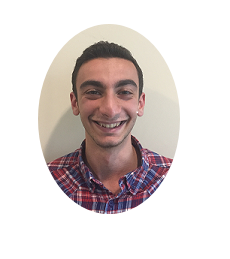Revolutionizing Rare Disease Diagnostics with Whole-Genome Sequencing at GMCK-RD
Rare diseases collectively impact millions worldwide, presenting a diverse range of symptoms and complex genetic underpinnings. The integration of whole-genome sequencing (WGS) into clinical practice promises a transformative leap in diagnosing these conditions. A recent study by Stranneheim et al., published in Genome Medicine, chronicles the pioneering efforts at the Genomic Medicine Center Karolinska-Rare Diseases (GMCK-RD) to embed WGS within the healthcare system, showcasing its efficacy in rare disease diagnostics.
A Collaborative Model for Rare Disease Diagnosis
GMCK-RD represents a groundbreaking partnership between the Karolinska University Hospital and the Science for Life Laboratory (SciLifeLab) in Sweden. This initiative integrates genomic research into clinical workflows, facilitating the identification of causative genetic variants across a broad spectrum of rare diseases. Over five years, the center has analyzed 3,219 patients and their families, achieving a 40% diagnostic success rate—a significant milestone compared to traditional methods.
Key Findings and Diagnostic Yield
High Diagnostic Rates Across Disease Groups
Diagnostic yields ranged from 19% to 54% for different panels, with notable successes in skeletal dysplasia (54%) and ciliopathy (53%). Trio analyses—examining patient and parental genomes—proved particularly effective for conditions with high de novo mutation rates, such as infantile epilepsy.
Heterogeneous Genetic Findings
The study identified pathogenic variants in 754 distinct genes, underscoring the genetic diversity underlying rare diseases. Recurrent findings included COL2A1 (skeletal dysplasia) and SCN1A (epilepsy). Some variants were unique to individual cases, highlighting the personalized nature of genomic medicine.
Structural and Non-SNV Variants
The inclusion of copy number variants (CNVs), structural variants, and repeat expansions boosted diagnostic accuracy by 7.5%. For instance, tandem repeat expansions in the RFC1 gene helped diagnose CANVAS syndrome.
Streamlined Workflows for Precision Medicine
The study highlights the development of a custom bioinformatics pipeline, MIP 8.2, to process sequencing data. Innovative tools, such as the Scout decision support system, allowed for efficient interpretation and global data sharing via platforms like ClinVar and MatchMaker Exchange. By linking genetic findings with detailed clinical phenotypes, GMCK-RD enabled rapid diagnosis and treatment personalization.
Clinical and Research Impacts
Immediate Clinical Applications
Genetic findings influenced treatment decisions in real-time. For example, ketogenic diets were initiated for patients with pyruvate dehydrogenase deficiency, while sodium channel blockers were prescribed for gain-of-function SCN2A mutations.
Gene Discovery
Unsolved cases contributed to the discovery of 17 novel disease-causing genes, including MIR140 (skeletal dysplasia) and SLC12A5 (infantile epilepsy). These findings extend our understanding of disease mechanisms and pave the way for innovative therapies.
Challenges in Integrating WGS into Healthcare
Despite its success, the initiative faced hurdles:
Decentralized Healthcare Systems: The fragmented structure of Swedish healthcare complicated data sharing across regions.
Legal and Ethical Barriers: Strict regulations on patient data hindered national coordination.
Resource Constraints: The reliance on a multidisciplinary team and cutting-edge technology demands sustainable funding and organizational support.
Future Directions
The GMCK-RD model is set to expand through the Genomics Medicine Sweden initiative, aiming for nationwide implementation of WGS-based diagnostics. By fostering collaboration across clinical and academic silos, the program seeks to establish a scalable framework for genomic medicine.
Concluding Thoughts
The GMCK-RD experience demonstrates the transformative potential of WGS in diagnosing and managing rare diseases. By bridging the gap between cutting-edge research and clinical application, this model offers hope to thousands of families navigating the uncertainties of rare genetic conditions. As technology and collaboration evolve, WGS is poised to become a cornerstone of precision medicine worldwide.
References:
Modenato, C., Kumar, K., Moreau, C. et al. Effects of eight neuropsychiatric copy number variants on human brain structure. Transl Psychiatry 11, 399 (2021).

